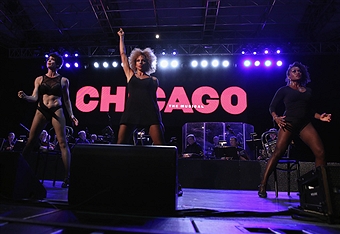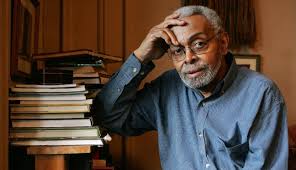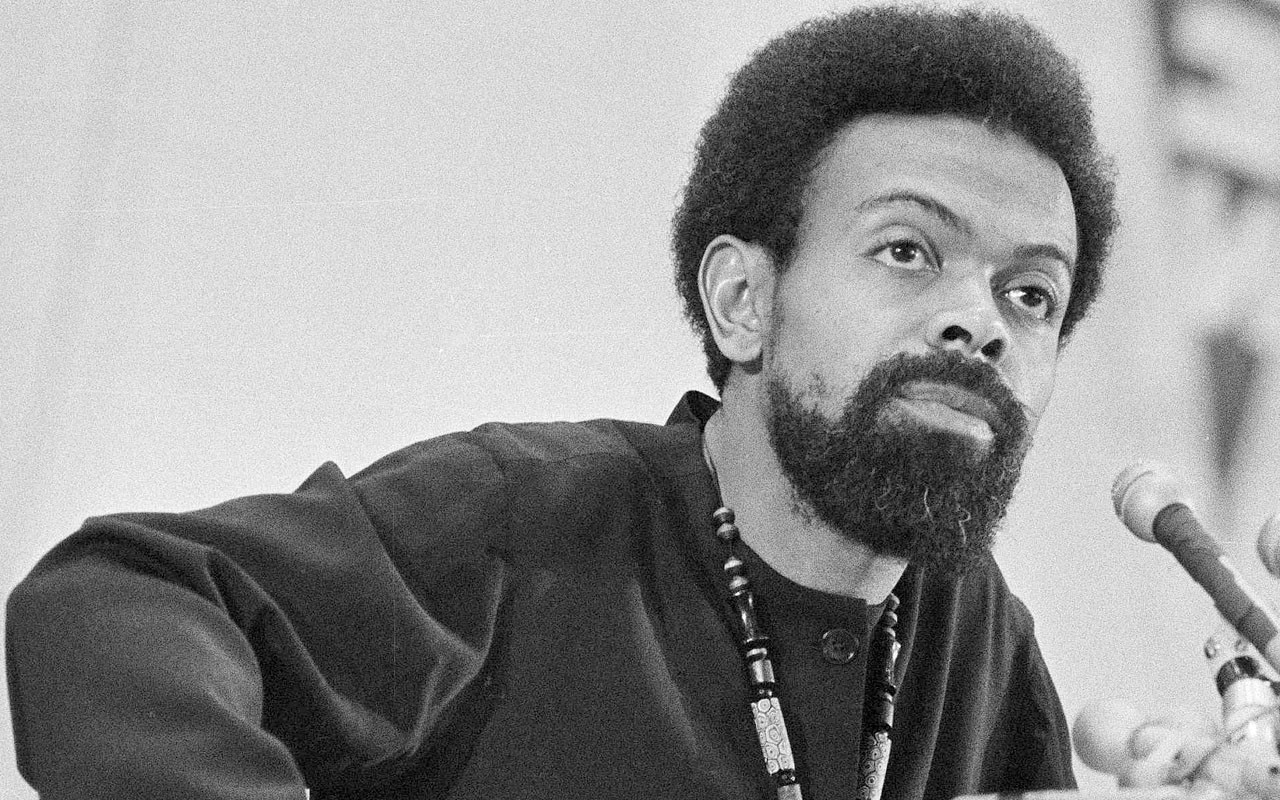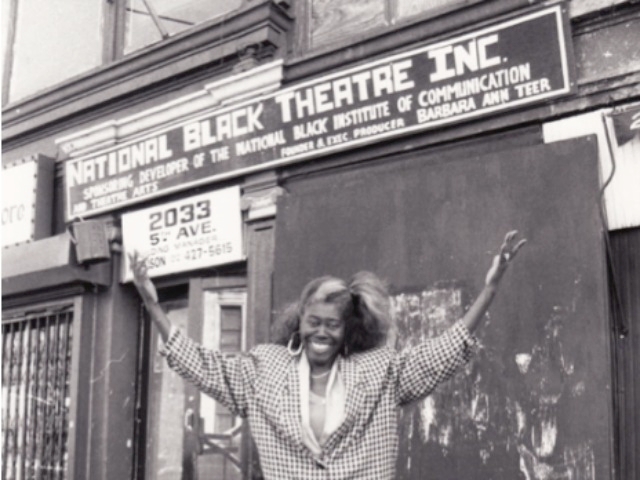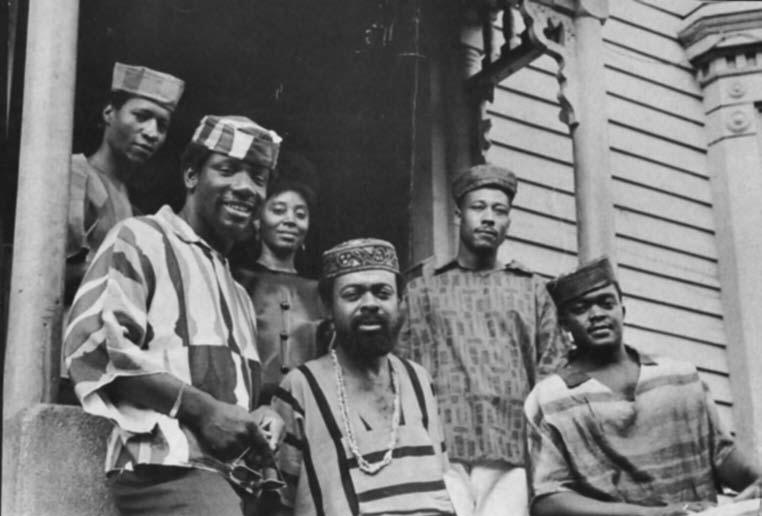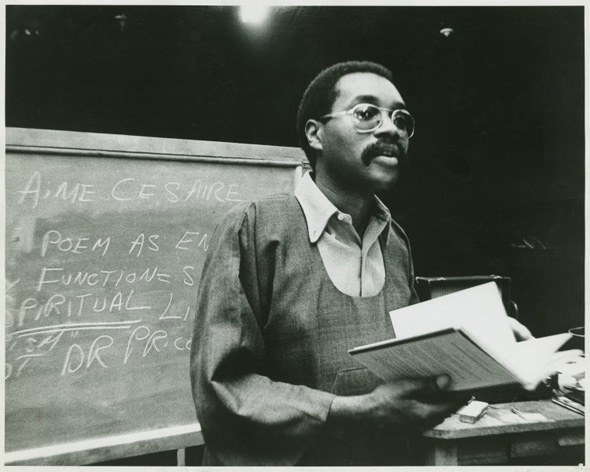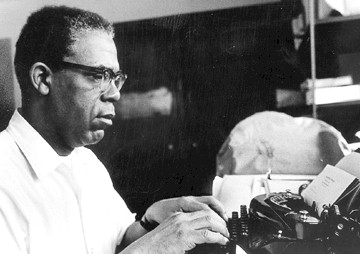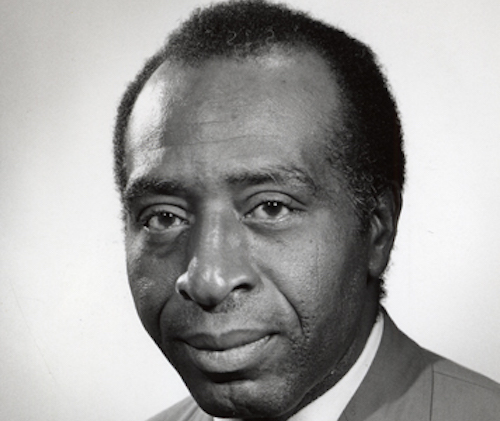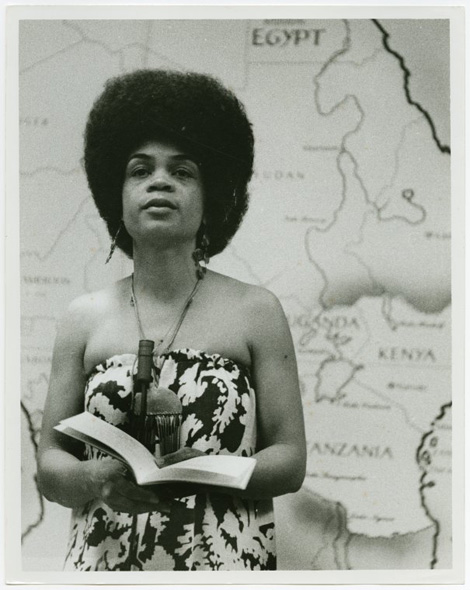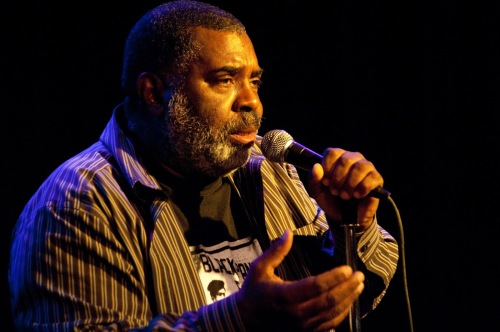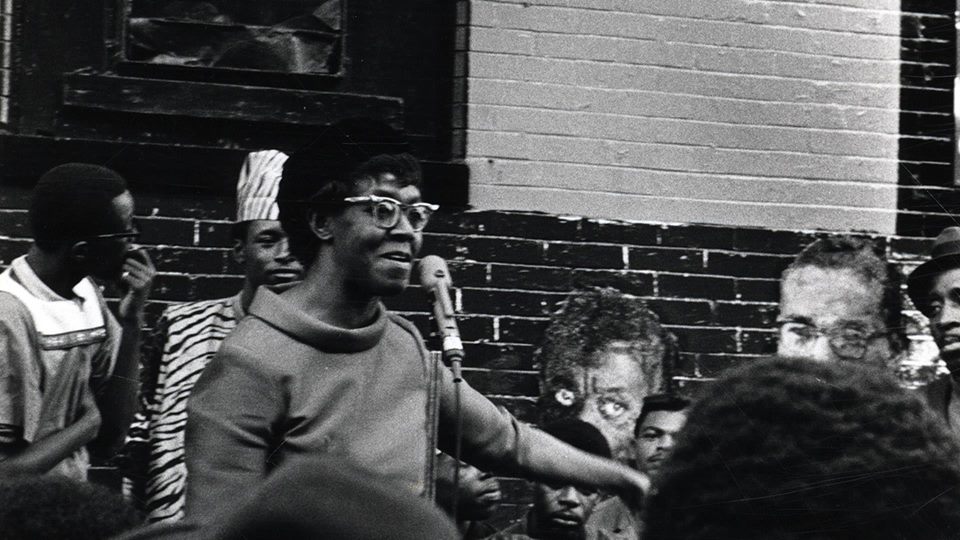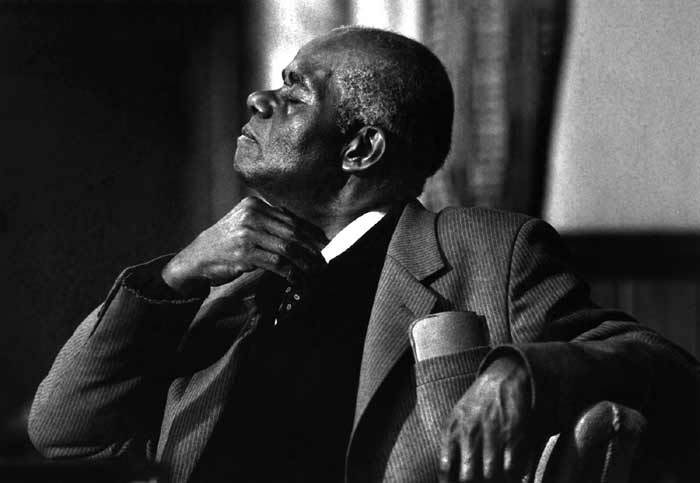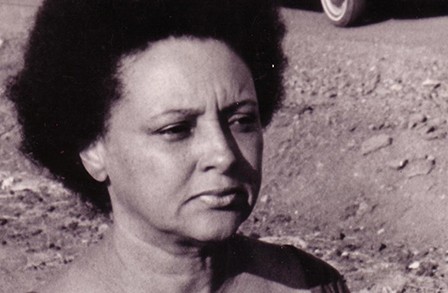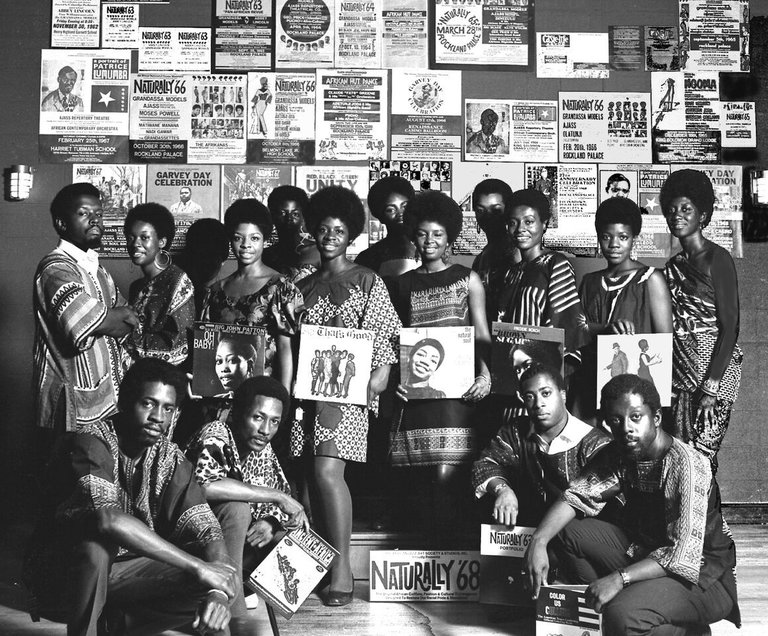Black Broadway and Off Broadway Shows You Must See
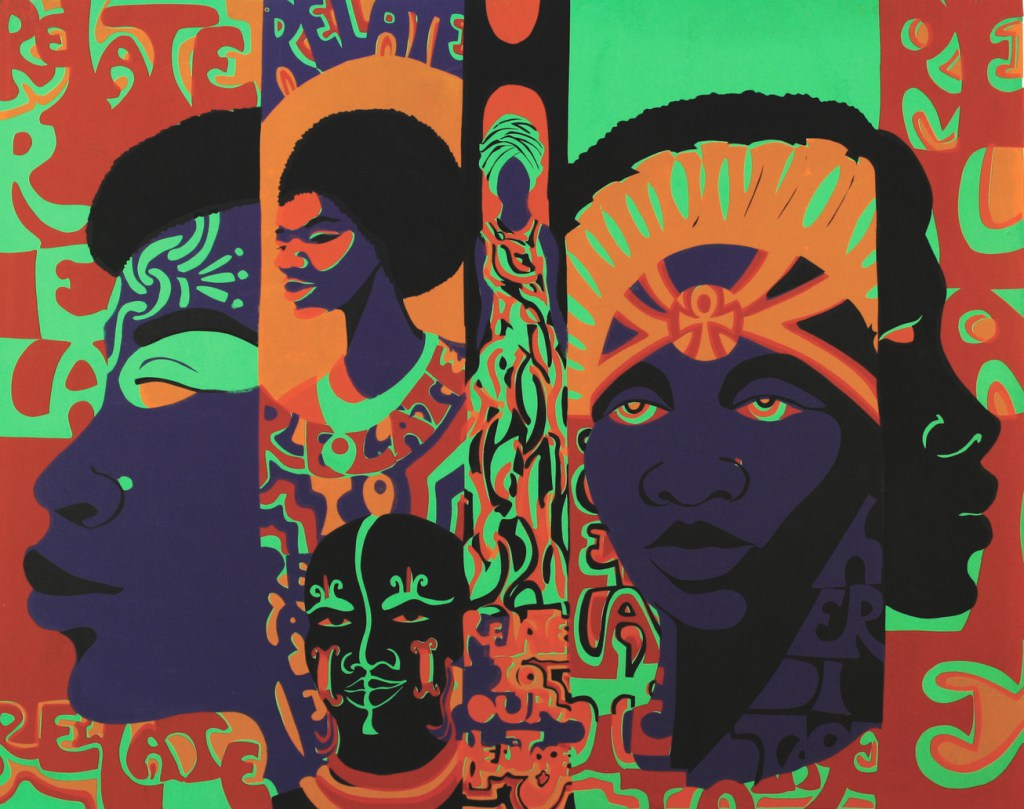
The Black Arts Movement
Part I: History and Context
Kalamu ya Salaam
Both inherently and overtly political in content, the Black Arts movement was the only American literary movement to advance “social engagement” as a sine qua non of its aesthetic.
The movement broke from the immediate past of protest and petition (civil rights) literature and dashed forward toward an alternative that initially seemed unthinkable and unobtainable: Black Power.
In a 1968 essay, “The Black Arts Movement,” Larry Neal proclaimed Black Arts the “aesthetic and spiritual sister of the Black Power concept.” As a political phrase, Black Power had earlier been used by Richard Wright to describe the mid-1950s emergence of independent African nations.
The 1960s’ use of the term originated in 1966 with Student Nonviolent Coordinating Committee civil rights workers Stokely Carmichael and Willie Ricks.
Quickly adopted in the North, Black Power was associated with a militant advocacy of armed self-defense, separation from “racist American domination,” and pride in and assertion of the goodness and beauty of Blackness.
Although often criticized as sexist, homophobic, and racially exclusive (i.e., reverse racist), Black Arts was much broader than any of its limitations. Ishmael Reed, who is considered neither a movement apologist nor advocate (“I wasn’t invited to participate because I was considered an integrationist”), notes in a 1995 interview,
"I think what Black Arts did was inspire a whole lot of Black people to write. Moreover, there would be no multiculturalism movement without Black Arts. Latinos, Asian Americans, and others all say they began writing as a result of the example of the 1960s."
Blacks gave the example that you don’t have to assimilate. You could do your own thing, get into your own background, your own history, your own tradition, and your own culture. I think the challenge is for cultural sovereignty and Black Arts struck a blow for that.
History and Context
The Black Arts movement, usually referred to as a "sixties" movement, coalesced in 1965 and broke apart around 1975/1976.
In March 1965 following the 21 February assassination of Malcolm X, LeRoi Jones (Amiri Baraka) moved from Manhattan's Lower East Side (he had already moved away from Greenwich Village) uptown to Harlem, an exodus considered the symbolic birth of the Black Arts movement.
Jones was a highly visible publisher (Yugen and Floating Bear magazines, Totem Press), a celebrated poet (Preface to a Twenty-Volume Suicide Note, 1961, and The Dead Lecturer, 1964), a major music critic (Blues People, 1963), and an Obie Award-winning playwright (Dutchman, 1964) who, up until that fateful split, had functioned in an integrated world.
Other than James Baldwin, who at that time had been closely associated with the civil rights movement, Jones was the most respected and most widely published Black writer of his generation.
While Jones's 1965 move uptown to found the Black Arts Repertory Theatre/School (BARTS) is the formal beginning (it was Jones who came up with the name "Black Arts"), Black Arts, as a literary movement, had its roots in groups such as the Umbra Workshop.
Umbra (1962) was a collective of young Black writers based in Manhattan's Lower East Side; major members were writers Steve Cannon, Tom Dent, Al Haynes, David Henderson, Calvin C. Hernton, Joe Johnson, Norman Pritchard, Lenox Raphael, Ishmael Reed, Lorenzo Thomas, James Thompson, Askia M. Touré (Roland Snellings; also a visual artist), Brenda Walcott, and musician-writer Archie Shepp.
Touré, a major shaper of "cultural nationalism," directly influenced Jones. Along with Umbra writer Charles Patterson and Charles's brother, William Patterson, Touré joined Jones, Steve Young, and others at BARTS.
Umbra, which produced Umbra Magazine, was the first post-civil rights Black literary group to make an impact as radical in the sense of establishing their own voice distinct from, and sometimes at odds with, the prevailing white literary establishment.
The attempt to merge a Black-oriented activist thrust with a primarily artistic orientation produced a classic split in Umbra between those who wanted to be activists and those who thought of themselves as primarily writers, though to some extent all members shared both views.
Black writers have always had to face the issue of whether their work was primarily political or aesthetic. Moreover, Umbra itself had evolved out of similar circumstances: In 1960 a Black nationalist literary organization, On Guard for Freedom, had been founded on the Lower East Side by Calvin Hicks.
Its members included Nannie and Walter Bowe, Harold Cruse (who was then working on Crisis of the Negro Intellectual, 1967), Tom Dent, Rosa Guy, Joe Johnson, LeRoi Jones, and Sarah Wright, among others.
On Guard was active in a famous protest at the United Nations of the American-sponsored Bay of Pigs Cuban invasion and was active in support of the Congolese liberation leader Patrice Lumumba. From On Guard, Dent, Johnson, and Walcott along with Hernton, Henderson, and Touré established Umbra.
Another formation of Black writers at that time was the Harlem Writers Guild, led by John O. Killens, which included Maya Angelou, Jean Carey Bond, Rosa Guy, and Sarah Wright among others. But the Harlem Writers Guild focused on prose, primarily fiction, which did not have the mass appeal of poetry performed in the dynamic vernacular of the time.
Askia Muhammad Touré, poet, essayist, political editor,and leading voice of the Black Arts Movement.
The attempt to merge a Black-oriented activist thrust with a primarily artistic orientation produced a classic split in Umbra between those who wanted to be activists and those who thought of themselves as primarily writers, though to some extent all members shared both views.
Black writers have always had to face the issue of whether their work was primarily political or aesthetic. Moreover, Umbra itself had evolved out of similar circumstances: In 1960 a Black nationalist literary organization, On Guard for Freedom, had been founded on the Lower East Side by Calvin Hicks.
Its members included Nannie and Walter Bowe, Harold Cruse (who was then working on Crisis of the Negro Intellectual, 1967), Tom Dent, Rosa Guy, Joe Johnson, LeRoi Jones, and Sarah Wright, among others.
On Guard was active in a famous protest at the United Nations of the American-sponsored Bay of Pigs Cuban invasion and was active in support of the Congolese liberation leader Patrice Lumumba. From On Guard, Dent, Johnson, and Walcott along with Hernton, Henderson, and Touré established Umbra.
Another formation of Black writers at that time was the Harlem Writers Guild, led by John O. Killens, which included Maya Angelou, Jean Carey Bond, Rosa Guy, and Sarah Wright among others. But the Harlem Writers Guild focused on prose, primarily fiction, which did not have the mass appeal of poetry performed in the dynamic vernacular of the time.
Poems could be built around anthems, chants, and political slogans, and thereby used in organizing work, which was not generally the case with novels and short stories.
"For the publication of Black Arts creative literature, no magazine was more important than the Chicago-based Johnson publication Negro Digest / Black World"
UMBRA magazine published by Black Arts literary collective UMBRA
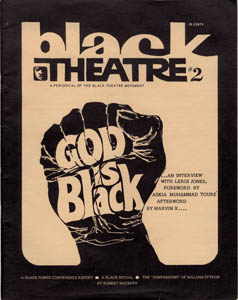
Harlem's The New Lafayette Theatre published 6 issues of Black Theatre magazine (1967 – 1972).
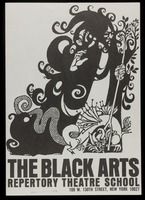
Black Arts Repertory Theatre School pamphlet c. 1965
The Journal of Black Poetry was the chief organ of the Black Arts Movement.
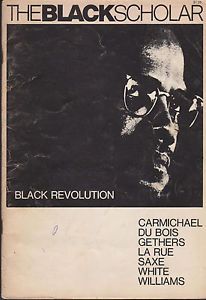
1970 edition of The Black Scholar journal, founded in 1969 near San Francisco, California, by Robert Chrisman, Nathan Hare and Allan Ross

SKU00006
The attempt to merge a Black-oriented activist thrust with a primarily artistic orientation produced a classic split in Umbra between those who wanted to be activists and those who thought of themselves as primarily writers, though to some extent all members shared both views.
Black writers have always had to face the issue of whether their work was primarily political or aesthetic. Moreover, Umbra itself had evolved out of similar circumstances: In 1960 a Black nationalist literary organization, On Guard for Freedom, had been founded on the Lower East Side by Calvin Hicks.
Its members included Nannie and Walter Bowe, Harold Cruse (who was then working on Crisis of the Negro Intellectual, 1967), Tom Dent, Rosa Guy, Joe Johnson, LeRoi Jones, and Sarah Wright, among others.
On Guard was active in a famous protest at the United Nations of the American-sponsored Bay of Pigs Cuban invasion and was active in support of the Congolese liberation leader Patrice Lumumba. From On Guard, Dent, Johnson, and Walcott along with Hernton, Henderson, and Touré established Umbra.
Another formation of Black writers at that time was the Harlem Writers Guild, led by John O. Killens, which included Maya Angelou, Jean Carey Bond, Rosa Guy, and Sarah Wright among others. But the Harlem Writers Guild focused on prose, primarily fiction, which did not have the mass appeal of poetry performed in the dynamic vernacular of the time.
Poems could be built around anthems, chants, and political slogans, and thereby used in organizing work, which was not generally the case with novels and short stories.
Moreover, the poets could and did publish themselves, whereas greater resources were needed to publish fiction. That Umbra was primarily poetry- and performance-oriented established a significant and classic characteristic of the movement's aesthetics.
When Umbra split up, some members, led by Askia Touré and Al Haynes, moved to Harlem in late 1964 and formed the nationalist-oriented "Uptown Writers Movement," which included poets Yusef Rahman, Keorapetse "Willie" Kgositsile from South Africa, and Larry Neal.
Accompanied by young "New Music" musicians, they performed poetry all over Harlem. Members of this group joined LeRoi Jones in founding BARTS.
Jones's move to Harlem was short-lived. In December 1965 he returned to his home, Newark (N.J.), and left BARTS in serious disarray. BARTS failed but the Black Arts center concept was irrepressible mainly because the Black Arts movement was so closely aligned with the then-burgeoning Black Power movement.
The mid-to-late 1960s was a period of intense revolutionary ferment. Beginning in 1964, rebellions in Harlem and Rochester, New York, initiated four years of long hot summers. Watts, Detroit, Newark, Cleveland, and many other cities went up in flames, culminating in nationwide explosions of resentment and anger following Martin Luther King, Jr.'s April 1968 assassination.
In his seminal 1965 poem "Black Art," which quickly became the major poetic manifesto of the Black Arts literary movement, Jones declaimed "we want poems that kill." He was not simply speaking metaphorically.
During that period armed self-defense and slogans such as "Arm yourself or harm yourself' established a social climate that promoted confrontation with the white power structure, especially the police (e.g., "Off the pigs"). Indeed, Amiri Baraka (Jones changed his name in 1967) had been arrested and convicted (later overturned on appeal) on a gun possession charge during the 1967 Newark rebellion.
Additionally, armed struggle was widely viewed as not only a legitimate, but often as the only effective means of liberation. Black Arts' dynamism, impact, and effectiveness are a direct result of its partisan nature and advocacy of artistic and political freedom "by any means necessary." America had never experienced such a militant artistic movement.
Nathan Hare, the author of The Black Anglo-Saxons (1965), was the founder of 1960s Black Studies. Expelled from Howard University, Hare moved to San Francisco State University where the battle to establish a Black Studies department was waged during a five-month strike during the 1968-1969 school year.
As with the establishment of Black Arts, which included a range of forces, there was broad activity in the Bay Area around Black Studies, including efforts led by poet and professor Sarah Webster Fabio at Merrit College.
A foundational member of the West Coast Black Arts Movement, Sarah Webster Fabio was a poet, performer, literary critic and educator who taught at Meritt College in Oakland, California. Her students included Maulana Karenga, Bobby Seale and Huey Newton. Fabio helped establish the first black studies departments at the California College of the Arts and the University of California-Berkeley.
Jones's move to Harlem was short-lived. In December 1965 he returned to his home, Newark (N.J.), and left BARTS in serious disarray. BARTS failed but the Black Arts center concept was irrepressible mainly because the Black Arts movement was so closely aligned with the then-burgeoning Black Power movement.
The mid- to late 1960s was a period of intense revolutionary ferment. Beginning in 1964, rebellions in Harlem and Rochester, New York, initiated four years of long hot summers. Watts, Detroit, Newark, Cleveland, and many other cities went up in flames, culminating in nationwide explosions of resentment and anger following Martin Luther King, Jr.'s April 1968 assassination.
In his seminal 1965 poem "Black Art," which quickly became the major poetic manifesto of the Black Arts literary movement, Jones declaimed "we want poems that kill." He was not simply speaking metaphorically.
During that period armed self-defense and slogans such as "Arm yourself or harm yourself' established a social climate that promoted confrontation with the white power structure, especially the police (e.g., "Off the pigs"). Indeed, Amiri Baraka (Jones changed his name in 1967) had been arrested and convicted (later overturned on appeal) on a gun possession charge during the 1967 Newark rebellion.
Additionally, armed struggle was widely viewed as not only a legitimate, but often as the only effective means of liberation. Black Arts' dynamism, impact, and effectiveness are a direct result of its partisan nature and advocacy of artistic and political freedom "by any means necessary." America had never experienced such a militant artistic movement.
Nathan Hare, the author of The Black Anglo-Saxons (1965), was the founder of 1960s Black Studies. Expelled from Howard University, Hare moved to San Francisco State University where the battle to establish a Black Studies department was waged during a five-month strike during the 1968-1969 school year.
As with the establishment of Black Arts, which included a range of forces, there was broad activity in the Bay Area around Black Studies, including efforts led by poet and professor Sarah Webster Fabio at Merrit College.
The initial thrust of Black Arts ideological development came from the Revolutionary Action Movement (RAM), a national organization with a strong presence in New York City. Both Touré and Neal were members of RAM.
After RAM, the major ideological force shaping the Black Arts movement was the US (as opposed to "them') organization led by Maulana Karenga. Also ideologically important was Elijah Muhammad's Chicago-based Nation of Islam.
These three formations provided both style and ideological direction for Black Arts artists, including those who were not members of these or any other political organization. Although the Black Arts movement is often considered a New York-based movement, two of its three major forces were located outside New York City.
Black Arts Movement
Suggested Readings
As the movement matured, the two major locations of Black Arts' ideological leadership, particularly for literary work, were California's Bay Area because of the Journal of Black Poetry and the Black Scholar, and the Chicago-Detroit axis because of Negro Digest/Black World and Third World Press in Chicago, and Broadside Press and Naomi Long Madgett's Lotus Press in Detroit.
The only major Black Arts literary publications to come out of New York were the short-lived (six issues between 1969 and 1972) Black Theatre magazine published by the New Lafayette Theatre and Black Dialogue, which had actually started in San Francisco (1964-1968) and relocated to New York (1969-1972).
In 1967 LeRoi Jones visited Karenga in Los Angeles and became an advocate of Karenga's philosophy of Kawaida. Kawaida, which produced the "Nguzo Saba" (seven principles), Kwanzaa, and an emphasis on African names, was a multifaceted, categorized activist philosophy.
Jones also met Bobby Seale and Eldridge Cleaver and worked with a number of the founding members of the Black Panthers. Additionally, Askia Touré was a visiting professor at San Francisco State and was to become a leading (and longlasting) poet as well as, arguably, the most influential poet-professor in the Black Arts movement.
Playwright Ed Bullins and poet Marvin X had established Black Arts West, and Dingane Joe Goncalves had founded the Journal of Black Poetry (1966). This grouping of Ed Bullins, Dingane Joe Goncalves, LeRoi Jones, Sonia Sanchez, Askia M. Touré, and Marvin X became a major nucleus of Black Arts leadership.
Kaluma ya Salaam
Kalamu ya Salaam is a New Orleans writer, filmmaker, and educator. Kalamu is a senior staff member of Students at the Center, a writing program in the New Orleans public schools. He is the moderator of neo•griot, an information blog for black writers and supporters of our literature worldwide. Kalamu can be reached at kalamu@mac.com
Next:
The Black Arts Movement: Theory and Practice
